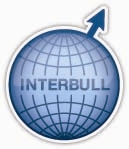
Form GENO
Status as of: PLEASE ENTER A DATE (YYYY-MM-DD)
Download the MS-Word version HERE FormGENO.
DESCRIPTION OF NATIONAL GENOMIC EVALUATION SYSTEMS
Country (or countries) |
|
Main trait groupa. NOTE. Only one trait group per form! |
|
Breed(s) |
|
Trait definition(s) and unit(s) of measurement Attach an appendix if needed |
|
Source of genotypes (chips used) |
|
Imputation method for missing genotypes |
|
Propagation of genomic information to non-genotyped descendants and ancestors |
|
Animals included in reference population (males, females, countries included, total number) |
|
Source of phenotypic data (DYD, de-regressed proofs, national EBVs and/or MACE evaluations) |
|
Other criteria (data edits) for inclusion of records |
|
Criteria for extension of records (if applicable) |
|
Sire categories |
|
Genomic model (linear, Bayesian, polygenic effect, genotypes or haplotypes) |
|
Blending of direct genomic value (DGV) with traditional EBV |
|
Environmental effects in the genetic evaluation model |
|
Adjustment for heterogeneous variance in evaluation model |
|
Computation of genomic reliability |
|
Blending of foreign/Interbull information in evaluation |
|
Genetic parameters in the evaluation |
Use Appendix GENO for heritability/genetic variance estimates; for multiple-trait genetic evaluations, provide genetic correlation estimates between traits separately.Use also appendices PR, CO, BCO, SM, LO, CA, as applicable, if you participate in the international genetic evaluations of Interbull |
Expression of genetic evaluations If standardized (e.g. RBV), give standardization formula in the appendix |
|
Definition of genetic reference base |
|
Labeling of genomic evaluations |
|
Criteria for official publication of evaluations |
|
Number of evaluations / publications per year |
|
Use in total merit index |
|
Anticipated changes in the near future |
|
Key reference on methodology applied |
|
Key organization: name, address, phone, fax, e-mail, web site |
|
aEither: Production (e.g. milk, fat, protein), Conformation, Health (e.g. mastitis resistance, milk somatic cell, resistance to diseases other than mastitis), Longevity, Calving (e.g. stillbirth, calving ease), Female fertility (e.g. non-return rate, interval between reproductive events, number of AI’s, heat strength), Workability (e.g. milking speed, temperament), Beef production, Efficiency (e.g. body weight, energy balance, body conditioning score), or Other traits.
System Validation
Approximate number of test bulls for this trait group: |
|
If including foreign reference bulls: 4-yr old de-regressed MACE EBVs, OR Current de-regressed MACE EBVs If including foreign test bulls (type of proof 21 or 22), provide the reason. |
|
If using a truncation ≠ 4 years, provide the reason. |
|
If applying an age cutoff for test bulls ≠ (YYYY-8), provide the reason |
|
Appendix GENO
Parameters used in genetic/genomic evaluation
Country (or countries): |
|
|||||
Main trait group: |
|
|||||
Breed (repeat as necessary): |
|
|||||
Trait |
Definition |
ITBa |
h2b |
Genetic varianceb |
Official proof standardisation formulac |
|
|
|
|
|
|
|
|
|
|
|
|
|
|
|
|
|
|
|
|
|
|
aIndicate, with X, traits that are submitted to Interbull for international genetic evaluations. bIf repeated records are treated as separate traits, provide heritability estimates and genetic variances separately for each trait, as well as for all traits pooled, i.e. for the trait submitted to Interbull. cExpressed as follows: StandEval=((eval-a)/b)*c+d where a=mean of the base adjustment, b=standard deviation of the base, c=standard deviation of expression (include sign if scale is reversed), and d=base of expression.